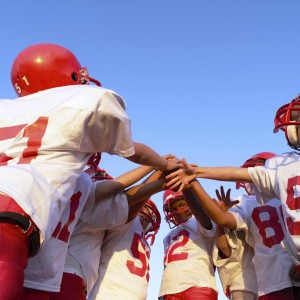Plica syndrome of the knee occurs when synovial tissue bands become irritated from injury or overuse. Pieces of synovial plica are remnants from early fetal development. These plica are membranes that should normally diminish during the second trimester of fetal development. When the pouches do not combine to form a synovial cavity, the plica remain in the knee as bands of synovial tissue.
Plica syndrome of the knee is associated with chronic overuse, inflammatory conditions, and knee injury. The medial plica is one of the four plica that are found in the knee. This piece of the lower end of the kneecap runs sideways and attaches to the lower aspect of the thighbone.
How does a plica cause problems in the knee?
A plica that becomes irritated causes knee pain. This occurs as a result of repetitive motions, certain exercises, or from kneeling. Any activity that causes repetitive bending and straightening of the knee can cause knee plica syndrome, such as stair-climbing, running, or biking. When the knee is struck near the medial plica from a fall or car accident, knee plica syndrome can develop. These types of injuries cause the plica and the tissue around it to swell and become painful.
What are the signs and symptoms of plica syndrome?
The main symptom of plica syndrome is pain. There is frequently a snapping sensation along the inside aspect of the knee when it is bent. This is caused by the rubbing of the thickened plica over the edge of the thighbone where it enters the joint. The knee may also be tender to touch and swollen.
How is plica syndrome diagnosed?
The orthopedic specialist diagnoses plica syndrome during a physical examination or at an arthroscopic surgery procedure. X-rays, a CT scan, and/or a MRI may be done to rule out other problems. X-rays rule out fractures, and the MRI shows soft tissue injuries. The CT scan can detect a thickened plica in some cases. To confirm the diagnoses and treat the problem at the same time, the orthopedic specialist may perform an arthroscopy.
What is the treatment for plica syndrome?
Our orthopedic specialists treat plica syndrome by resting the knee joint and with anti-inflammatory medications. If these conventional measures do not ease the pain of the knee, the doctor may inject cortisone into the joint.
Cortisone is a powerful anti-inflammatory agent. For serious cases of plica syndrome, surgical removal of the plica may be necessary. This procedure is done with an arthroscope, using a small camera and tiny instruments to remove the inflamed tissue.
The area left once the plica is removed heals with minimal scarring. Plica resection is often needed. The goal of treatment is to reduce the inflammation and restore function.
What is involved with the rehabilitation process?
If your doctor treats you non-surgically, you should return to normal activity within 4 to 6 weeks. It may be necessary for you to see a physical therapist during this time to learn stretching and strengthening exercises.
Other therapies include friction massage, ultrasound, and ice applications, all done to decrease the inflammation associated with plica syndrome. If you have surgery, you will need physical therapy to help you regain strength and function.

 A fracture is a broken bone. These types of injuries occur when there is physical force exerted on the bone. Broken bones are common during childhood. Also, as you age, your bones become more stiff and delicate and you are more susceptible to fractures. There are several types of fractures, but the main categories are displaced, non-displaced, open, and closed.
A fracture is a broken bone. These types of injuries occur when there is physical force exerted on the bone. Broken bones are common during childhood. Also, as you age, your bones become more stiff and delicate and you are more susceptible to fractures. There are several types of fractures, but the main categories are displaced, non-displaced, open, and closed. Casts are necessary to help broken bones recover. However, a cast must stay on for many weeks or months, making simple daily tasks difficult. You may remember showering with a plastic bag covering your cast. Thanks to the new waterproof casts, the plastic bag is no longer needed.
Casts are necessary to help broken bones recover. However, a cast must stay on for many weeks or months, making simple daily tasks difficult. You may remember showering with a plastic bag covering your cast. Thanks to the new waterproof casts, the plastic bag is no longer needed. Football is a rough sport, regardless of the protective equipment worn. Injuries go with the territory when it comes to this sport. Because the players are big, the game is fast, and the nature is physical, football injuries are quite common. In the United States alone, there are an estimated 1.2 million football injuries each year, and around 50 percent of these injuries occur during training.
Football is a rough sport, regardless of the protective equipment worn. Injuries go with the territory when it comes to this sport. Because the players are big, the game is fast, and the nature is physical, football injuries are quite common. In the United States alone, there are an estimated 1.2 million football injuries each year, and around 50 percent of these injuries occur during training.